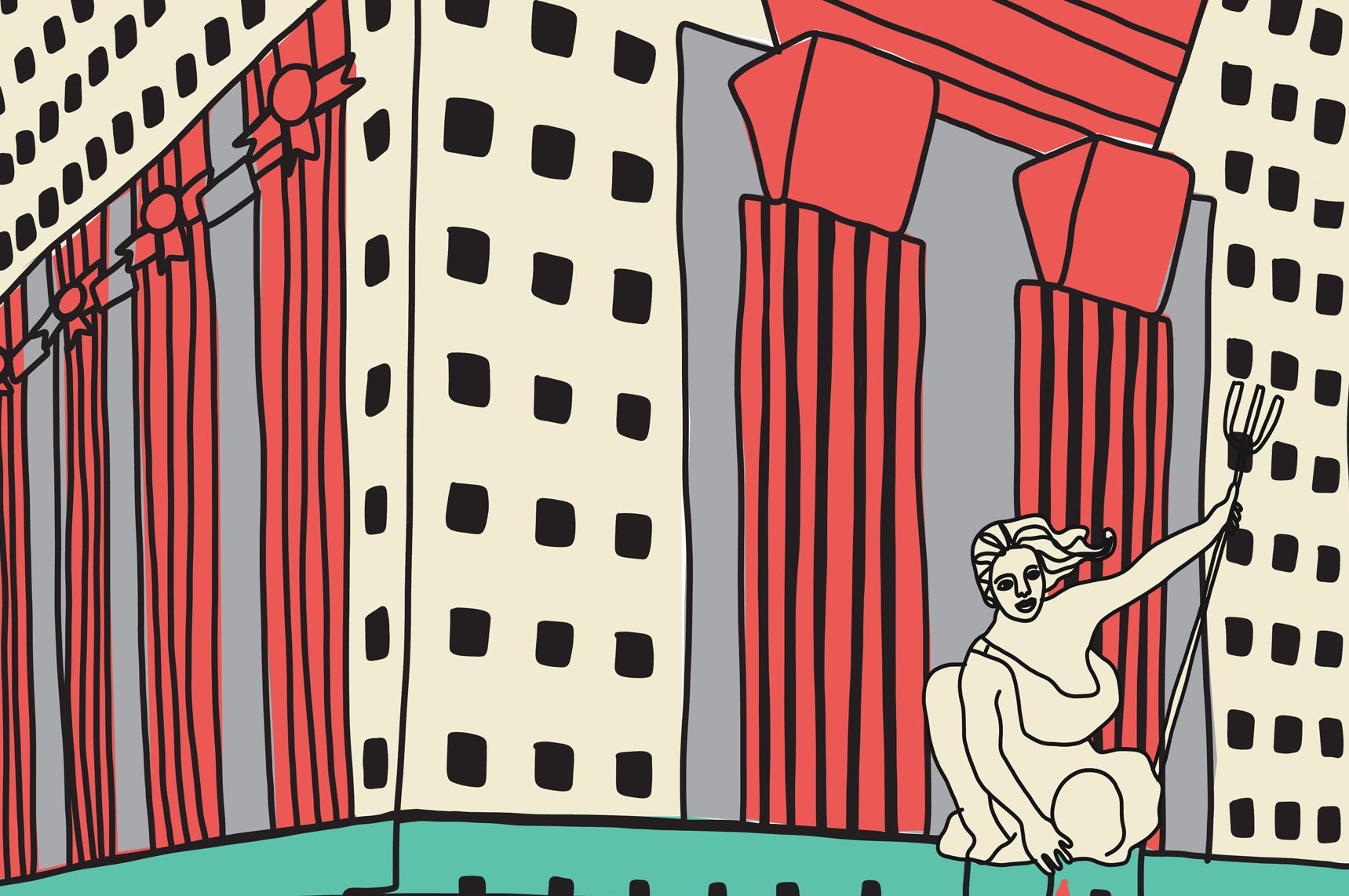A Guide to the Buildings around the Main Portland Protests
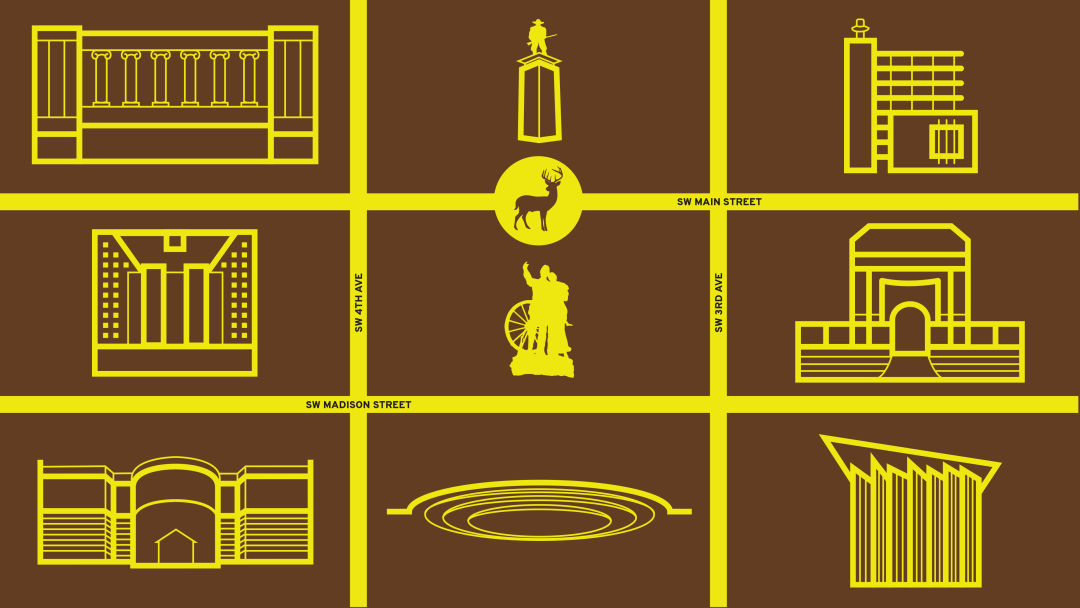
These government buildings and greenspaces have been the nexus of political demonstrations for nearly two months. Use this key to find their descriptions below:
7 4 1
8 5 2
9 6 3
Image: Brian Breneman
While there are city, county, Metro, state, regional, and federal offices and services located all over Portland, many are clustered around the greenspaces that have been home to demonstrators every night for nearly two months, supporting the Black Lives Matter movement and protesting police brutality and racist practices as well as, more recently, federal overreach of power. What in the world are these buildings and greenspaces? Here’s a quick guide to help you sort it out.
1. Mark O. Hatfield US Courthouse
2. Multnomah County Justice Center
3. Edith Green–Wendell Wyatt Federal Building
7. Multnomah County Courthouse
Mark O. Hatfield US Courthouse
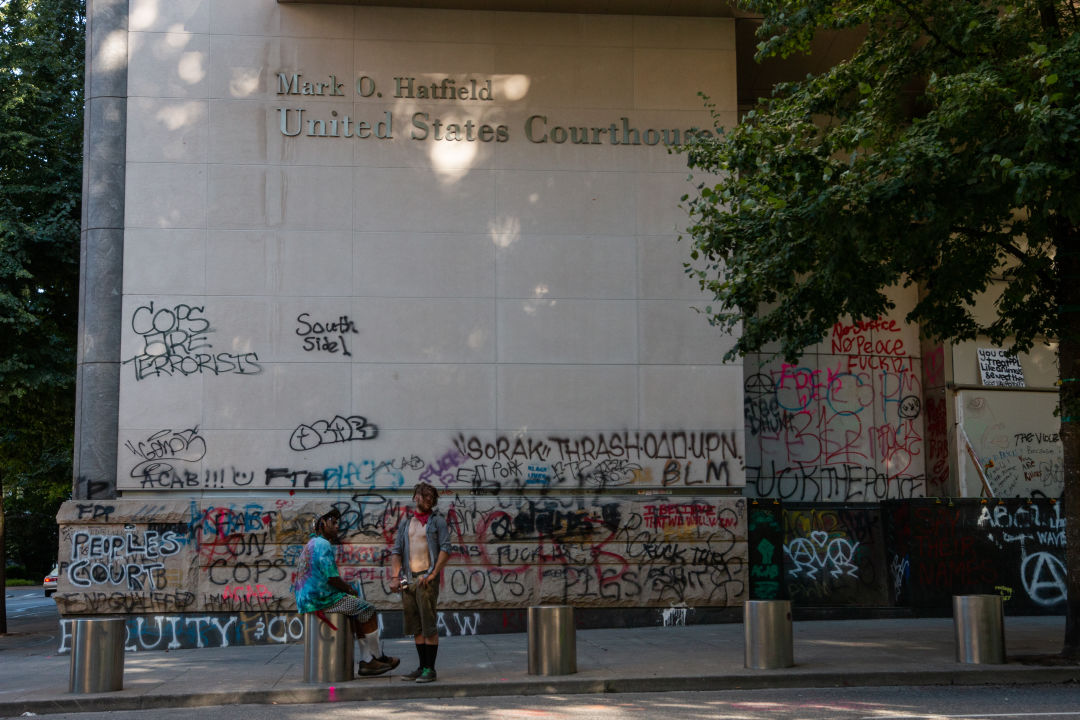
The Mark O. Hatfield US Courthouse, completed in 1997, is used by the United States District Court for the District of Oregon.
Image: Gabriel Granillo
The Mark O. Hatfield US Courthouse is one of four homes in the state to the US District Court for the District Oregon, where US Attorney Billy J. Williams would be involved in cases involving federal charges. (The District of Oregon is within the Ninth Circuit, which is headquartered in San Francisco but has facilities at the Pioneer Courthouse a few blocks northwest.) Completed in 1997, the 16-story building took over most district court activities from the old Gus J. Solomon Courthouse. It also hosts the occasional citizenship ceremony.
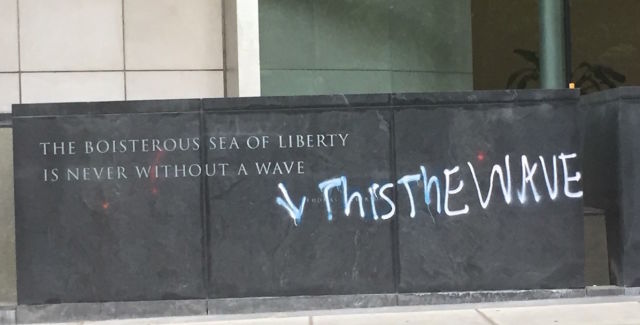
A Thomas Jefferson quote at the base of the Hatfield Courthouse, seen directly above on May 30, is now completely obscured, as seen in the first photo.
Image: Margaret Seiler
Named for a two-term governor turned five-term US senator known for antiwar votes, the generally quiet building is federal property and its “protection” is thus part of the justification for the continued presence in Portland of federal law enforcement agents. It has spent part of July surrounded by a black fence, but on Wednesday got a fresh new look courtesy of the Department of Homeland Security: a concrete barrier.
Multnomah County Justice Center
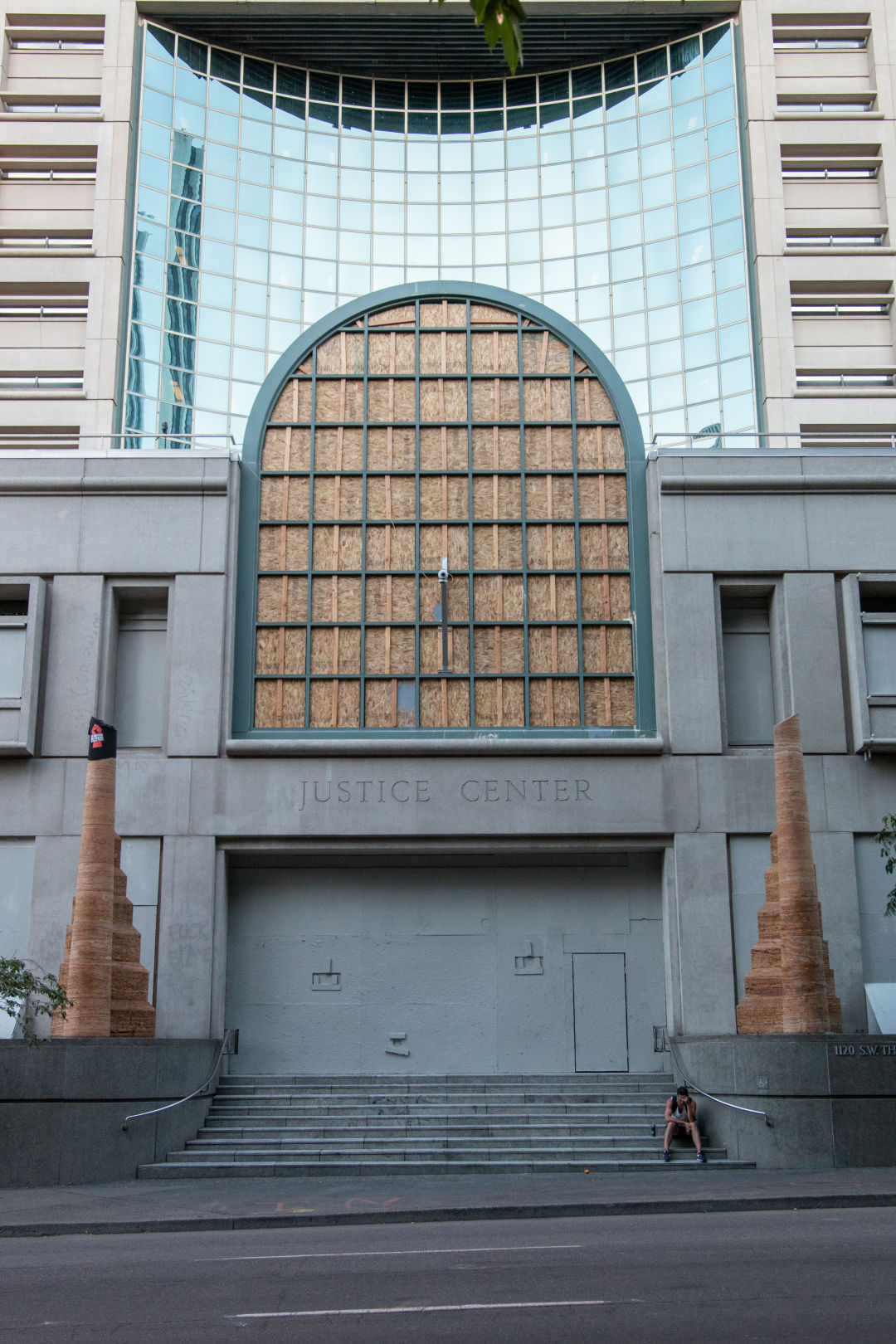
Home to the Portland Police Bureau’s Central Precinct, the Multnomah County Justice Center, seen here on July 21, remains the epicenter of the nightly protests in downtown Portland.
Image: Gabriel Granillo
On its fifth through eighth floors, the Multnomah County Justice Center houses Multnomah County Detention Center, the nearly 400-cell, maximum-security jail that, according to the sheriff’s office website, “serves as the initial booking facility for all arrestees within Multnomah County, houses adults in custody for the County, as well as state and federal inmates involved in court matters.” (More county inmates are housed at the medium-security Inverness Jail in outer Northeast.) The lower floors have courtrooms that handle arraignments, diversion hearings, probation violation hearings, and preliminary hearings. (Other types of hearings and all state circuit court trials happen across the way in the county courthouse—see below.) The Justice Center is also home to the Portland Police Bureau’s Central Precinct, which patrols the city’s west side except for the northern reaches of Forest Park, as well as the inner east side south of I-84 and west of César E. Chávez Boulevard. The Portland Police Museum and Historical Society is also here. It has a gift shop. Central Precinct and the museum both face SW Second Avenue, and a network of underground parking garages often spit police cars and crowd-control vehicles out onto SW First Avenue.
Edith Green–Wendell Wyatt Federal Building
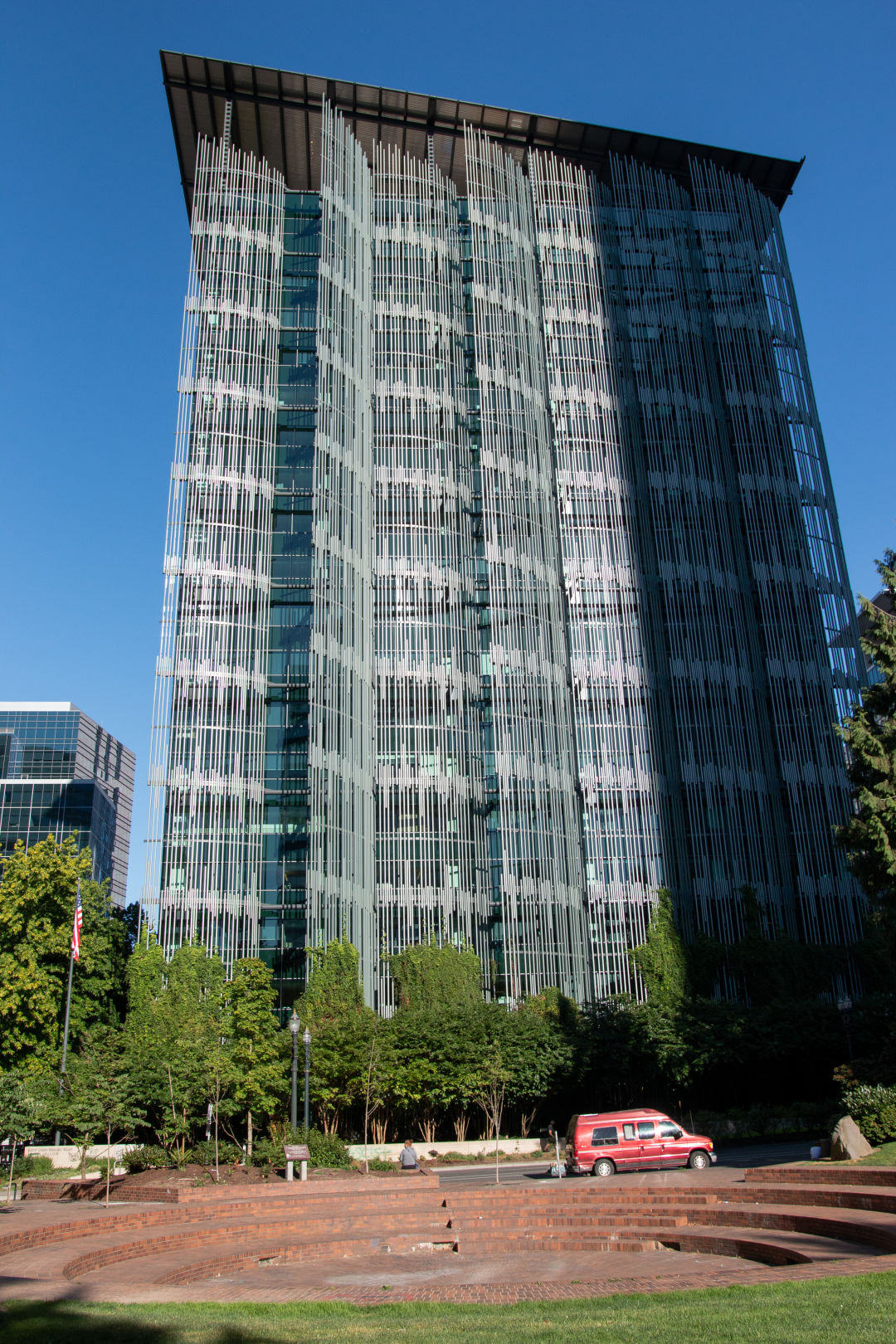
The Edith Green–Wendell Wyatt Federal Building, with Terry Schrunk Plaza in the foreground
Image: Gabriel Granillo
The Edith Green–Wendell Wyatt Federal Building dates to the 1970s and had a swanky LEED renovation starting in 2009, funded by the stimulus package passed in response to the Great Recession. The 18-story office building is home to Portland’s immigration court (part of the federal Department of Justice), an Internal Revenue Service office, Bureau of Land Management office, the US Forest Service’s Region 6 office, and other federal offices. (Like the rest of us, many federal employees are currently working from home.) Namesake Green served for 20 years in Congress representing Oregon’s 3rd district in the seat now held by Earl Blumenauer. She was a key figure in what would become the Equal Pay Act of 1963 and the policies now commonly known as Title IX. Her colleague and contemporary Wendell Wyatt, who represented the 1st congressional district (currently repped by Suzanne Bonamici), helped shape Oregon’s public lands as a member of the House Appropriations Committee. Green, who died in 1987, was a Democrat; Wyatt, who was 91 when he died in 2009, was a Republican.
Lownsdale Square
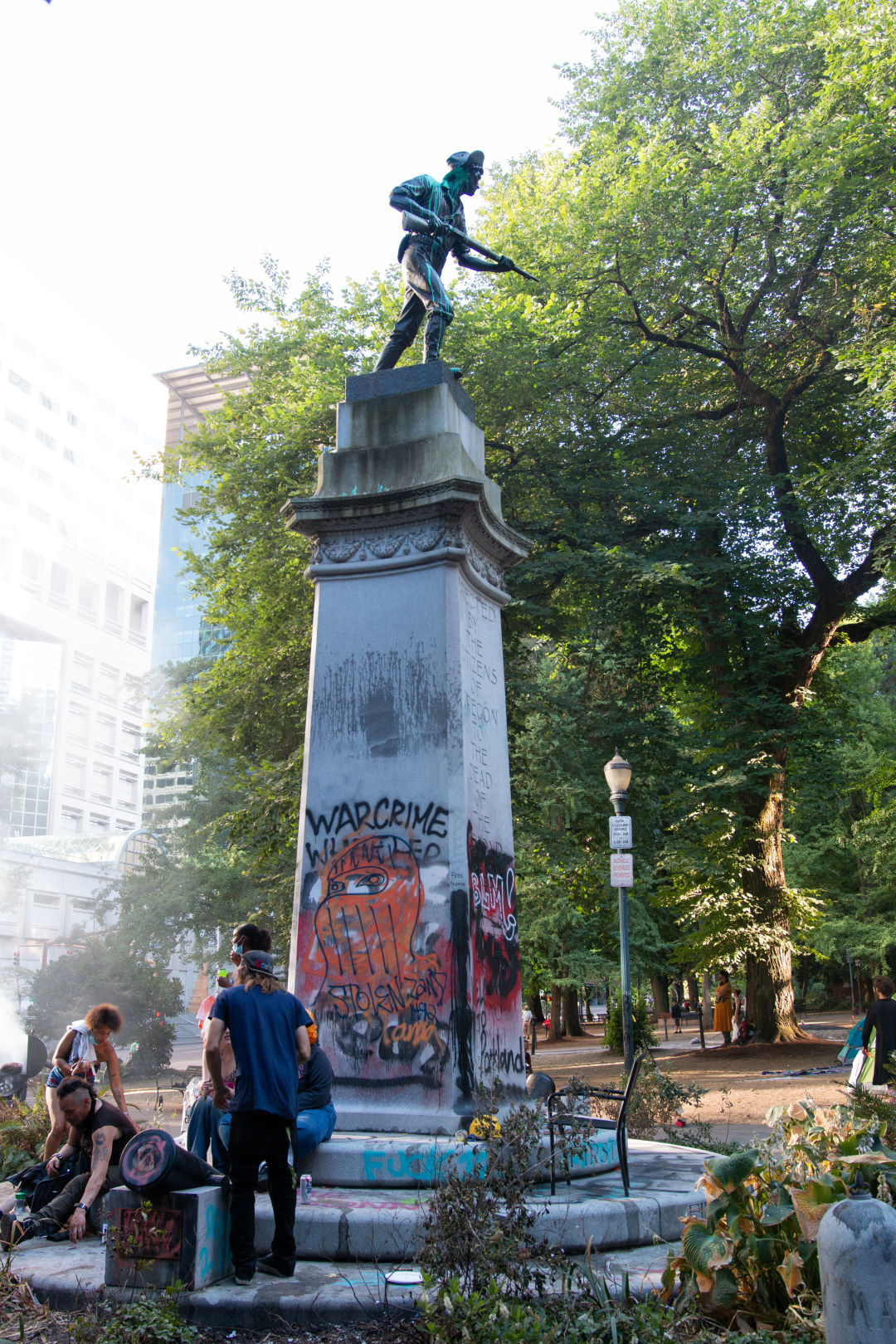
The Soldiers Monument was designed by Douglas Tilden and installed in Lownsdale Square in 1906 to honor the 2nd Oregon Volunteer Infantry Regiment troops who served in the Spanish-American War. The howitzers at its base were used by both Union and Confederate troops at Fort Sumter in the Civil War.
Image: Gabriel Granillo
Originally a “gentlemen’s gathering place” in what was historically called the Plaza Blocks, Lownsdale Square is named for Daniel Lownsdale, an early landowner of what would become Portland’s downtown. It’s home to a men’s restroom and two military memorials. (The North Park Blocks also had single-sex-designated areas and playgrounds in the early 1900s—gotta keep ’em separated.) Just south of Lownsdale Square is the longtime home of a fountain and statue called the Thompson Elk, because it was donated to the city by former mayor David Thompson. The 1900 sculpture by East Coast–based Roland Hinton Perry is taking a little break from standing in the middle of SW Main after fires damaged its base. In Gus Van Sant’s My Own Private Idaho, the elk was shown with a rider on it (a member of the film crew painted green).
Chapman Square
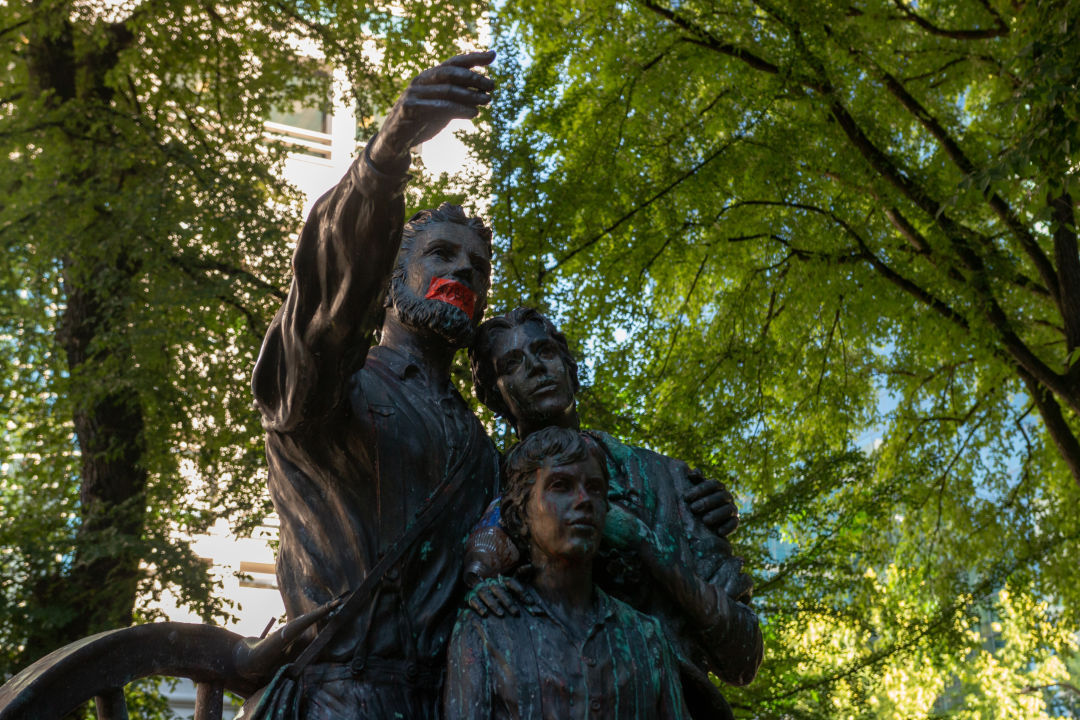
Completed in 1993, The Promised Land, designed by David Manuel to commemorate the 150th anniversary of the Oregon Trail, sits at the center of Chapman Square just west of the Multnomah County Justice Center.
Image: Gabriel Granillo
Named for another early owner of the townsite, William Chapman (not 1880s mayor James Chapman, who dabbled in bribery and vote buying), Chapman Square was originally meant to be enjoyed by just ladies and children, a safe space to gather and stroll without those boorish dudes from Lownsdale Square bugging them. It’s home to David Manuel’s 1993 sculpture The Promised Land, honoring the white, two-heterosexual-parent families who were among those who traversed the Oregon Trail 150 years before.
Terry Schrunk Plaza
Once called Federal Plaza but renamed for a fire captain, sheriff, and four-term Portland mayor who was investigated by Robert Kennedy on racketeering suspicions, this civic space is federal property, which explains the different fencing around it earlier this month compared to what’s been around city-owned spaces. (The fencing cut off access to the bushes in its southeast corner, which had made for a semiprivate place to pee during protests.) Its greenery and sloped amphitheater sit over a parking garage for the federal building across the street. In fact, the federal General Services Administration refers to the park as a “green roof” for the parking garage.
Multnomah County Courthouse
The Multnomah County Courthouse is home to not just the district attorney’s office and criminal proceedings but also family, small claims, civil, probate, and traffic courts. Those not generally involved in the legal system might go there to argue a parking ticket, pay a fine, or answer a summons for jury duty. Many services remain shut due to COVID-19, and very few trials are happening now. Fewer jurors are being called. Potential jurors are asked to call in the day before their service, and are often being told they don’t need to come in at all. Those who do have cause to visit the courthouse are given this assurance on the circuit court’s website: “While there have been protests downtown, including graffiti applied to the building during the night, the courthouse is open for business. We have security on site and are actively monitoring the situation to ensure the safety of all people who are coming to the courthouse.” (People won’t be coming to this building for long, though. In 2018, the aging courthouse was declared surplus property and sold to NBP Capital, a real estate group with experience renovating downtown properties. The deal allowed the county to lease back the building for two years while a new courthouse was readied at SW First Avenue and Jefferson Street. While plans originally called for the new courthouse to be operating by now, pandemic-related delays have pushed its opening to August 24.)
Portland Building
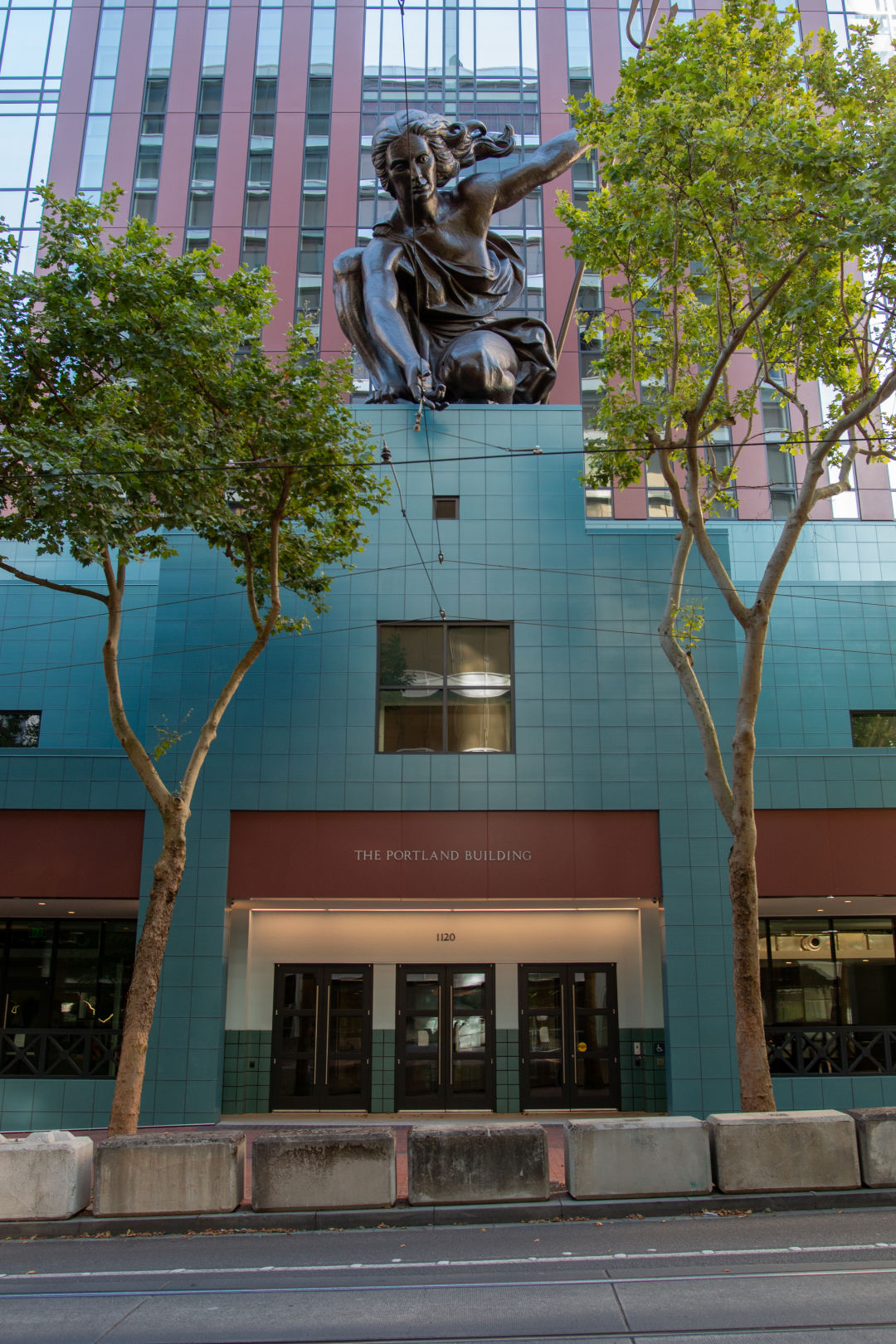
The Portland Building was designed in 1982 by Michael Graves.
Image: Gabriel Granillo
The Portland Building’s copper Portlandia statue faces SW Fifth Avenue, while the turquoise-and-coral backside of this Michael Graves–designed icon of postmodern architecture looms over Chapman Square. Both revered and hated, the city office building that’s been home to the parks department, the water bureau, and other agencies needed major work not long after its 1982 opening, and it’s been closed for two and a half years for a major remodel.
Portland City Hall
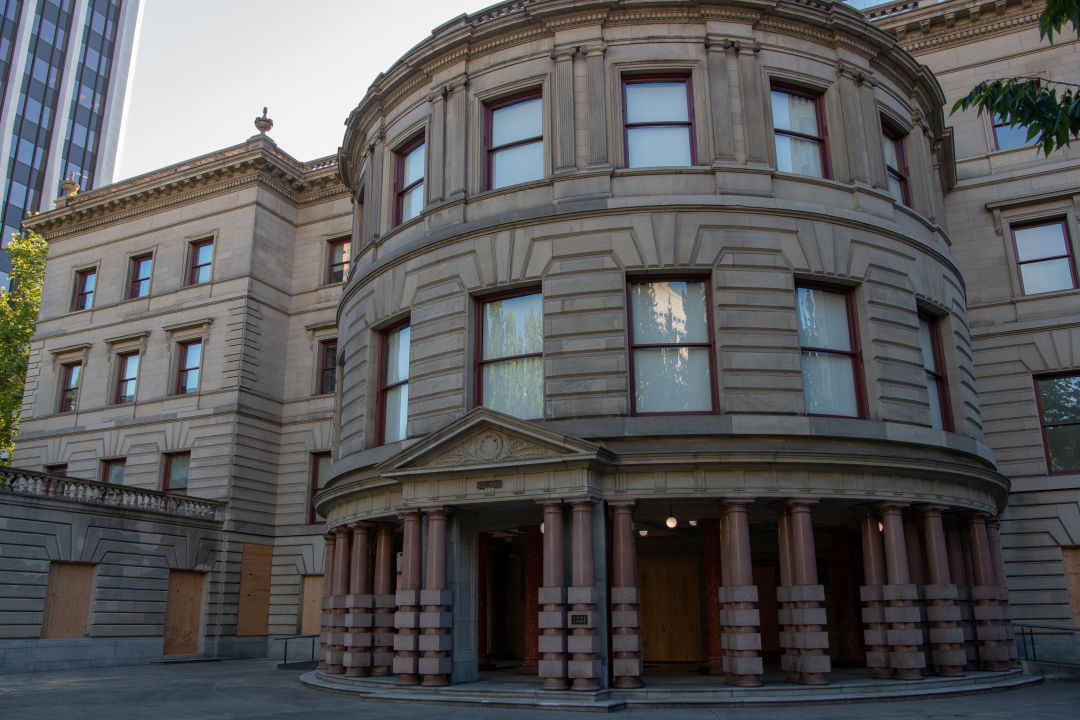
Portland City Hall on July 22
Image: Gabriel Granillo
While there were barricades around Portland City Hall in June, the sidewalk in front the four-story Italian Renaissance–inspired city government HQ is no longer home to a bunch of Jersey barriers and OSB panels. The 1895 building included a public library in its early days; now it’s home to the mayor’s, city attorney’s, and city commissioners’ offices, some other city services, council chambers, conference rooms, and ceremonial spaces.
